David Suzuki's Blog, page 40
April 12, 2016
How to be a citizen scientist
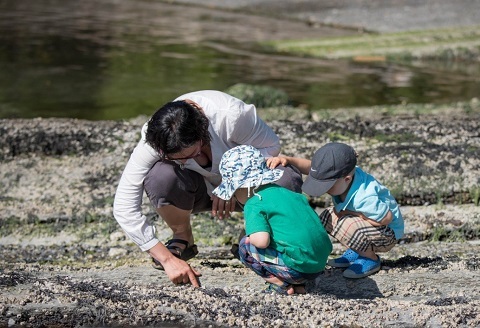
Let SciStarter play matchmaker, connecting your interests with its more than 1,100 citizen science projects. (Credit: Brendon Purdy Photography)
I've spotted humpback whales from my neighbourhood beach. But I didn't record my sightings for science!
So this year, for Citizen Science Day (April 16), I'm downloading the B.C. Cetacean Sightings Network WhaleReport App.
Twenty-three species of cetaceans and sea turtles have been recorded in British Columbia waters. Many populations are at-risk and under-studied. The B.C. Cetacean Sightings Network relies on people like you and me -- plus lighthouse keepers, ecotourism professionals, mariners and recreational boaters -- to record sightings of whales, dolphins, porpoises and sea turtles. Participation is free, kid-friendly and requires zero gear!
Who are citizen scientists?
Anyone who wants to be one! (Look at the person next to you glued to a smartphone -- even they could be filing a citizen science report!)
For example, do you road bike? Sign up for Roadkill Survey for Road Biker. By identifying and recording types of wildlife killed by traffic, you'll help collect clues about wildlife distribution, activity and responses to climate change. You might look at roadkill differently on your next holiday road trip...
How can I choose a project?
Let SciStarter play matchmaker, connecting your interests with its more than 1,100 citizen science projects. Join scientists, community leaders and people like you and me to observe and collect data on a range of topics, from bacteria to child behaviour to whales to butterflies. Research can involve one person or a collaboration of millions.
What gear do you need?
Few projects require specialty gear. Usually a smartphone will do to record sightings, take pictures and upload data. For example, to help butterflies, you need a digital camera, notebook and computer with internet access.
What if I don't know how to ID plants and animals?
Citizen scientist projects aren't limited to critters. Some, such as Autoimmune Citizen Scientist, involve health issues:
"Our goal is to bring the autoimmune community together in a scientific way, such that it will change the way that autoimmune disease is treated in healthcare today.
Users will record symptoms, treatments, and results using the Autoimmune Citizen Science mobile application. We plan to then aggregate that data and share it with our users so that they can see (anonymously) what is working for other people with similar symptoms."
Whether you join an ongoing project with SciStarter or attend one of a hundred events for Citizen Science Day, April 16 to May 21, you'll be part of a community of doers!
What else would you like to know about becoming a citizen scientist?
Sincerely,
Lindsay Coulter, a fellow Queen of Green
Hey! Want more DSF? Join David Suzuki on Facebook

Markham becomes Canada's first monarch-friendly city
Mayoral proclamation launches ambitious strategy to help monarch butterflies
MARKHAM, ON, April 12, 2016 -- The City of Markham was officially declared as the first Canadian municipality to become a "Monarch-Friendly City". A special proclamation was unanimously passed by Markham's City Council earlier this week to raise awareness about the decline of the monarch butterfly and the species' need for habitat.
"Markham is proud to be a municipal leader undertaking this important initiative to support pollinator populations including monarch butterflies and bees," said Mayor Frank Scarpitti. "Three quarters of the food we eat depends on pollinators like monarch butterflies. The City of Markham has an important role to play in educating the public and supporting monarch habitats in our city parks, community gardens, natural spaces, municipal facilities and public lands."
The City of Markham's monarch initiative is supported by Markham City Council, which endorsed a series of actions including: launching a public outreach campaign; collaborating with local gardening and conservation groups; additional butterfly-friendly plantings on city properties; creation of the world's first municipal milkweed nursery; and encouraging residents to sign the David Suzuki Foundation's Monarch Manifesto.
"The City of Markham is setting an inspiring example for municipalities throughout the migratory range of the monarch butterfly," said Jode Roberts, manager of the David Suzuki Foundation's #gotmilkweed and Monarch Manifesto campaigns. "While this effort is aimed at helping monarchs, it will also support hundreds of other essential local pollinators - like wild bees, honeybees and butterflies - that call Markham home."
Council also directed staff to develop a City of Markham Bee Strategy to protect bees, and include exploring a Bee Proclamation and evaluate opportunities for honeybee hives within the City of Markham.
"This week's proclamation is another example of how we strive to protect and enhance the City of Markham's natural features and green spaces to bring us closer to our goal of building a sustainable community," said Chair of Markham's Environmental and Sustainability Committee, Valerie Burke, Ward 1 Councillor.
While the number of monarch butterflies overwintering in Mexico was 3.5 times higher this winter than last, populations have declined by more than 80 per cent over the past two decades. Underscoring the perils facing monarchs, a single snowstorm in early March killed up to 11 million monarchs before they left for their multigenerational journey back to Canada. A new study estimates the population has up to a 57 per cent chance of reaching "quasi-extinction" levels over the next 20 years.
This week, the David Suzuki Foundation launched its third annual #gotmilkweed campaign that encourages Canadians to plant milkweed in their yards, parks and schoolyards. The campaign has inspired more than 10,000 milkweed plantings in Toronto, with another 11,000 people across the country pledging to help monarchs via the Monarch Manifesto. All proceeds from #gotmilkweed support the David Suzuki Foundation's efforts to conserve monarchs and other pollinators through research, advocacy and innovative initiatives like the Homegrown National Park Project.
To download a copy of the report from staff, click here.
Markham Mayor Frank Scarpitti: fscarpitti@markham.ca or 905-475-4872
Media inquiries / interview requests: Dennis Flaherty, 905-415-7520 dflaherty@markham.ca
Jode Roberts, David Suzuki Foundation: 647-456-9752; jroberts@davidsuzuki.org; @joderoberts
Hey! Want more DSF? Join David Suzuki on Facebook

April 8, 2016
Don't miss our Mother's Day cards - order by April 17

Every Mother's Day card you purchase will help us help butterflies: by getting more milkweed -- the only plant where monarchs lay their eggs -- into Canadian gardens, fields and schoolyards; by providing tips and resources for people to establish butterfly habitat in their communities; and by paving the way for a criss-crossing network of Butterflyways all across Canada!
YES — I want to send a Mother's Day card!
Hey! Want more DSF? Join David Suzuki on Facebook

April 7, 2016
Got milkweed? Monarchs still need your help
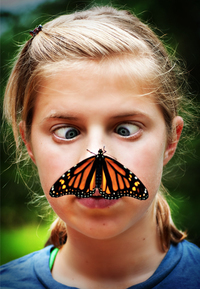
Three years ago, the eastern monarch butterfly population plummeted to 35 million, a drop of more than 95 per cent since the 1990s. More than a billion milkweed plants, which monarchs depend on for survival, had been lost throughout the butterfly's migratory range -- from overwintering sites in Mexico to summer habitat in Canada.
We needed more milkweed in the ground, quickly. But many provinces and states listed the plant as "noxious", and few nurseries and garden centres carried local "weeds".
A lot has changed in three years. The David Suzuki Foundation launched its #gotmilkweed campaign in April 2013 to encourage Toronto residents to plant milkweed in yards and on balconies. Foundation volunteer Homegrown Park Rangers also planted milkweed in local parks and schoolyards. The Ontario government pulled the plant from its naughty list and media stories about the monarchs' plight took flight.
By winter 2015, the #gotmilkweed campaign had inspired more than 10,000 milkweed plantings in Toronto, with another 11,000 people across the country pledging to help monarchs via the Monarch Manifesto. This week, the 2016 #gotmilkweed campaign launched, offering milkweed plants in Toronto and Montreal and seed packets for the rest of the country. As author and urban gardening guru Lorraine Johnson noted, these and other campaigns have made milkweed the hottest native plant on the market.
How are monarchs doing? Last month, Mexican authorities estimated the population that survived the epic 5,000-kilometre journey from Canada and the U.S. Midwest last fall was three-and-a-half times greater than the year before. Media across the continent ran stories about the comeback.
Then the weather turned. The worst winter storm in more than 30 years hit the mountainous forest where eastern monarchs overwinter, killing as many as 11 million. Scientists worried the damage would be even greater, such as in 2002 when a storm wiped out more than 220 million monarch.
According to a recent study by the Scripps Institution of Oceanography at UC San Diego and U.S. Geological Survey, published in Scientific Reports, eastern monarchs face a significant risk of extinction, with quasi-extinction -- when so few are left that recovery is impossible -- occurring over the next 20 years.
Severe weather is a major threat to monarchs, from winter storms in Mexico to scorching summer droughts in their breeding grounds. Near eradication of milkweed along parts of their migratory route is an even more pressing concern. Milkweed has long been found in roadsides, ditches, medians, meadows and fields. But sprawling development coupled with a dramatic increase in use of the herbicide glyphosate (Roundup) has killed tens of millions of the plants.
No one knows what the future holds for monarch butterflies. But there's reason to be encouraged.
U.S. federal agencies have offered millions in funding, and dozens of government agencies and conservation groups are working with projects like the Monarch Joint Venture. The U.S. Environmental Defense Fund is developing the innovative Monarch Butterfly Habitat Exchange, allowing landowners to get paid for opening marginal land to butterflies.
In Canada, while the federal government remains quiet, a handful of researchers and municipalities -- and thousands of concerned individuals -- are leading the charge.
Since last fall, the David Suzuki Foundation has worked with University of Guelph conservation biologist Tyler Flockhart to assess how to best manage linear infrastructure corridors -- transmission lines, railways and highways -- as potential "butterflyways." We hope the results will help establish best practices and make an economic case for boosting milkweed and monarchs throughout North American corridors.
Many cities are aiming to make space for bees and butterflies, but the City of Markham wants to become one of the most monarch-friendly municipalities on the continent. This winter, the Ontario city committed to creating the world's first municipal milkweed nursery, in partnership with the David Suzuki Foundation. It recently became the first Canadian city to sign a mayoral monarch pledge, and has started posting "butterfly parking signs" in city parks.
Although milkweed is spreading and monarch numbers have bounced back from historic lows, the population remains more than 80 per cent lower than 20 years ago. This summer, the great-grandkids of butterflies we welcomed last year will return to Canada. I encourage you to continue bringing them home, one milkweed plant at a time.
I WANT TO BUY MILKWEED FOR MONARCHS
Hey! Want more DSF? Join David Suzuki on Facebook

How to forage for food
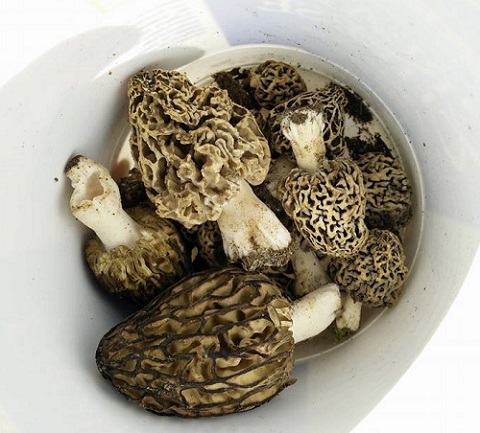
Foraging for morel mushrooms is a hobby fit for all ages. (Photo credit: Lindsay Coulter)
I grew up foraging for morel mushrooms, Saskatoon berries, wild blueberries, strawberries and raspberries in Alberta. On the West Coast now, I forage for salmonberries, blackberries and young stinging nettle.
For me, foraging is less about sustenance and more about time in nature with family and the thrill of seeking and finding -- and Grandma once made me a delicious wild blueberry pie! My family looked for morels in the spring -- my grandmother, Mom, my aunts and me. Last spring, my then two-year old son developed a killer eye for morels. It's a hobby for all ages.
If you're a city dweller or don't come from a lineage of gatherers, don't fret. You can take a foraging tour in a local city park. For example, Forager Foundation @ForagerFDN leads tours in the Vancouver area, ranked beginner to advanced. There might be similar tours or courses led by businesses, non-profits, Indigenous groups or parks where you live. (If so, please share below with a comment and link.)
Tips for foraging
Avoid poisonous or endangered plants -- purchase an identification guide to help you triple check the plant or fungi species you find.
Harvest only what you need.
Obey signage. Harvest away from parks and nature reserves. (For example, Metro Vancouver Parks asks people not to harvest chanterelle mushrooms in Pacific Spirit Park.)
Beware of pesticide- or herbicide-sprayed areas -- if you're collecting in ditches for example, watch for signs of spraying (brown vegetation) or call your local municipality.
Obey trail signs, tread lightly and try not to trample natural areas.
Learn animal track, scat and sign to see what else might be foraging in the area.
Take a tour and learn from experts.
Try new recipes.
To increase your chance of seeing wildlife in their natural habitat, leave your dog at home.
Start foraging in your backyard -- make dandelion salad!
Have you foraged? Why? What did you find?
Sincerely, Lindsay Coulter
A fellow Queen of Green
Hey! Want more DSF? Join David Suzuki on Facebook

April 5, 2016
Province heeds science in commendable wolf and coyote hunt decision
Ontario, April 5, 2016 - The David Suzuki Foundation and Ontario Nature welcomed Ontario's decision yesterday to maintain current hunting regulations for Ontario's northern wolves and coyotes. In December, 2015, the Ministry of Natural Resources and Forestry proposed to address declining moose populations by making it easier to kill wolves, removing any limit to the number of coyotes that could be killed by licensed hunters, and opening up the hunt to non-residents.
The David Suzuki Foundation, Ontario Nature and other organizations argued that science does not support predator control as a long-term, successful means of managing moose and other prey populations. "We are happy to see that the government has based its final decision on science and precaution," said Anne Bell, the Director of Conservation and Education at Ontario Nature. "Enlightened wildlife management calls for more than shot-in-the-dark solutions that unwisely target top predators like wolves and coyotes." There are many potential factors contributing to moose decline in Ontario in recent years. The one certain factor is hunting pressure by humans. Appropriately, the Province has been implementing changes to the hunting regime, and is seeking to better understand the causes of moose decline.
"We hope to have turned the page on this issue," said Rachel Plotkin, Ontario Science Projects Manager at the David Suzuki Foundation. "For centuries wolves and coyotes have been treated as vermin and problem animals when really they are linchpins in healthy, functioning ecosystems. They continue to be scapegoated and killed as a result of misguided management decisions. This has to change."
For more information or to arrange an interview:
Jode Roberts, David Suzuki Foundation: 647-456-9752; jroberts@davidsuzuki.org
John Hassell, Ontario Nature; 416-786-2171; johnh@ontarionature.org
- 30 -
Ontario Nature protects wild species and wild spaces through conservation, education and public engagement. Ontario Nature is a charitable organization representing more than 30,000 members and supporters, and 150 member groups across Ontario. For more information, visit ontarionature.org.
The David Suzuki Foundation is a Canadian non-profit environmental organization dedicated to finding solutions through science-based research, public engagement and policy work. To find out more about the David Suzuki Foundation, visit www.davidsuzuki.org or follow us on Facebook and Twitter.
Hey! Want more DSF? Join David Suzuki on Facebook

April 4, 2016
Canada's Challenge and Opportunity: Transformations for major reductions in GHG emissions
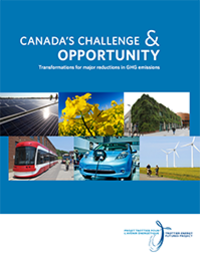
The Trottier Energy Futures Project presents an innovative and rigorous modelling analysis of the existing potential for Canada to meet the target of reducing GHG emissions by 80 per cent below 1990 levels by 2050. This project was undertaken in partnership with the Canadian Academy of Engineers and supported by the Trottier Family Foundation.
Hey! Want more DSF? Join David Suzuki on Facebook

Got milkweed, Canada?
David Suzuki Foundation expands popular campaign to support monarch butterflies
TORONTO -- The David Suzuki Foundation will encourage Canadians to plant milkweed in their yards, parks and schoolyards this spring with its third annual #gotmilkweed campaign, in support of dwindling migratory monarch butterfly populations.
"Monarch butterflies had a good winter, but they remain perilously close to extinction," said Jode Roberts, manager of the David Suzuki Foundation's Got Milkweed campaign and Toronto-based Homegrown National Park Project. "Planting milkweed and other pollinator-friendly plants in our gardens, schoolyards and parks is the best way citizens across the country can help bring them back."
While the number of monarch butterflies overwintering in Mexico was 3.5 times higher this winter than last, populations have declined by more than 80 per cent over the past two decades. Underscoring the perils facing monarchs, a single snowstorm in early March killed up to 11 million monarchs before they left for their multigenerational journey back to Canada. A new study estimates the population has up to a 57 per cent chance of reaching "quasi-extinction" levels over the next 20 years.
"Milkweed is the only plant that monarch butterflies lay their eggs on and is the primary source of food for monarch caterpillars," said Roberts. "Scientists have identified milkweed planting as the most important action people can take to help support threatened monarch populations."
The online #gotmilkweed campaign offers three types of milkweed plants native to eastern Canada that can be purchased individually or as kits. For the first time, the sale also includes milkweed seed packets that will be mailed in early May. People living outside of the range of the eastern monarch population are encouraged to contribute $25 to the campaign, so the David Suzuki Foundation can plant milkweed on their behalf. The French version of the campaign can be found here.
The #gotmilkweed campaign has inspired more than 10,000 milkweed plantings in Toronto, with another 11,000 people across the country pledging to help monarchs via the Monarch Manifesto. All proceeds from #gotmilkweed will support the David Suzuki Foundation's efforts to conserve monarchs and other pollinators through research, advocacy and innovative initiatives like the Homegrown National Park Project.
For more information, please contact: Jode Roberts, David Suzuki Foundation: 647-456-9752; jroberts@davidsuzuki.org; @joderoberts
Hey! Want more DSF? Join David Suzuki on Facebook

April 1, 2016
Why I will hand back my degree to McGill University

Viola Ng via Flickr
Twenty-one years ago, I finished my last exam and left the McGill University campus for the last time. I remember how proud I felt. As someone from the small town of Rimouski, Quebec, where we rarely heard a word of English, graduating from McGill felt like conquering Mount Everest.
I will always remember the words of Elie Wiesel, the keynote speaker at my graduation: "The opposite of love is not hate. It is indifference." This was his way of telling us that our degree came with responsibility -- the responsibility not to turn away in the face of moral peril, to stand up for what is right. These words are among the greatest gifts I was ever offered.
Climate change is the defining issue of our times. It is a scientific fact. Acting to prevent it is not only a technological, economic and political challenge, it has become a moral imperative. In his 2015 encyclical, Laudato Si, Pope Francis said environmental destruction comes from the same evil that leads to social destruction: moral relativity. He reminded us that climate change will first and foremost hurt the poorest, and that we share a responsibility to protect the Creation.
Working with David Suzuki for several years, I have learned that the biosphere is our only home, and that life on Earth is an extraordinary thing. There is strong scientific consensus that global warming beyond 2 C above pre-industrial level is dangerous. We are on a path that will lead to warming above 4 C. This threatens the very foundation of our civilization and could throw Earth's life-support systems off track for millennia.
Can we stay indifferent in the face of such peril? I can't, and this is why I will hand back my degree to McGill University.
Two-thirds of all fossil fuels -- coal, oil, gas -- need to stay in the ground to avoid dangerous warming. Here's the catch: the current value of fossil fuel assets is based on full exploitation of all proven reserves. The only way for these assets to maintain their value is to burn all these reserves and trigger catastrophic climate change. If we act to protect our climate, they lose their value and become "stranded assets". Investors have a moral decision to make: either help protect our climate or go after short-term gains.
According to publicly accessible information, McGill University holds approximately $70 million in fossil fuel investments, or roughly five per cent of its $1.3 billion endowment fund. When it invests part of its endowment fund in coal, oil and gas, McGill University is betting on fossil fuels against our climate. This is an example of the moral relativity Pope Francis is warning us against, and of the indifference to human harm Elie Wiesel so eloquently talked about at my graduation.
Dozens of universities in the world, including Stanford and Oxford, have announced that they will divest. In doing so, they are not only making an ethical decision, they are also protecting their assets by reducing exposure to what economists are now calling a carbon bubble.
The time has come for McGill University to do the right thing. Indifference is no longer an option on climate change. As one of Canada's greatest scientific and educational institutions, McGill University has the opportunity to show leadership, integrity and vision.
Unfortunately, McGill has chosen to reject divestment, and as a result I will hand back my degree on April 1. I encourage all alumni to join me and the McGill Alumni for Divestment to make fossil fuels investments a thing of the past at McGill: http://mcgillalumnifordivestment.com/pledge-now/
Karel Mayrand is the David Suzuki Foundation's Director General for Quebec, Chair of Al Gore's Climate Reality Project Canada and a Proud McGill University alumnus.
Hey! Want more DSF? Join David Suzuki on Facebook

March 31, 2016
Geothermal: Tapping Earth's abundant energy
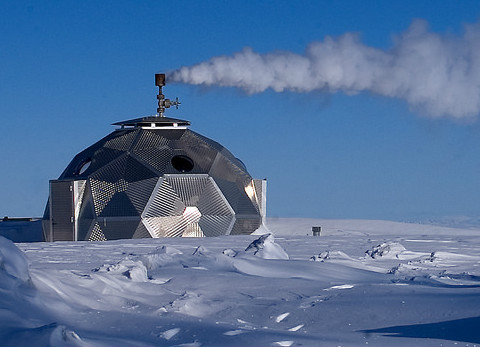
(Credit: Lydur Skulason via Flickr)
In the midst of controversy over B.C.’s Peace River Site C dam project, the Canadian Geothermal Energy Association released a study showing the province could get the same amount of energy more affordably from geothermal sources for about half the construction costs. Unlike Site C, geothermal wouldn’t require massive transmission upgrades, would be less environmentally disruptive and would create more jobs throughout the province rather than just in one area.
Despite the many benefits of geothermal, Canada is the only “Pacific Ring of Fire” country that doesn’t use it for commercial-scale energy. According to Desmog Blog, “New Zealand, Indonesia, the Philippines, the United States and Mexico all have commercial geothermal plants.” Iceland heats up to 90 per cent of its homes, and supplies 25 per cent of its electricity, with geothermal.
Geothermal energy is generated by heat from Earth’s rocks, liquids and steam. It can come from shallow ground, where the temperature is a steady 10 to 16 C, hot water and rocks deeper in the ground, or possibly very hot molten rock (magma) deep below Earth’s surface. As with clean-energy sources like solar, geothermal energy systems vary, from those that use hot water from the ground directly to heat buildings, greenhouses and water, to those that pump underground hot water or steam to drive turbines. The David Suzuki Foundation’s Vancouver and Montreal offices use geothermal.
According to National Geographic, geothermal power plants use three methods to produce electricity: dry steam, flash steam and binary cycle. Dry steam uses steam from fractures in the ground. “Flash plants pull deep, high-pressure hot water into cooler, low-pressure water,” which creates steam. In binary plants, which produce no greenhouse gas emissions and will likely become dominant, “hot water is passed by a secondary fluid with a much lower boiling point,” which turns the secondary fluid into vapour.
Unlike wind and solar, geothermal provides steady energy and can serve as a more cost-effective and less environmentally damaging form of baseload power than fossil fuels or nuclear. It’s not entirely without environmental impacts, but most are minor and can be overcome with good planning and siting. Geothermal fluids can contain gases and heavy metals, but most new systems recycle them back into the ground. Operations should also be located to avoid mixing geothermal liquids with groundwater and to eliminate impacts on nearby natural features like hot springs. Some geothermal plants can produce small amounts of CO2, but binary systems are emissions-free. In some cases, resources that provide heat can become depleted over time.
Although geothermal potential has been constrained by the need to locate operations in areas with high volcanic activity, geysers or hot springs, new developments are making it more widely viable. One controversial method being tested is similar to “fracking” for oil and gas. Water is injected into a well with enough pressure to break rock and release heat to produce hot water and steam to generate power through a turbine or binary system.
Researchers have also been studying urban “heat islands” as sources of geothermal energy. Urban areas are warmer than their rural surroundings, both above and below ground, because of the effects of buildings, basements and sewage and water systems. Geothermal pumps could make the underground energy available to heat buildings in winter and cool them in summer.
New methods of getting energy from the ground could also give geothermal a boost. Entrepreneur Manoj Bhargava is working with researchers to bring heat to the surface using graphene cords rather than steam or hot water. Graphene is stronger than steel and conducts heat well. Bhargava says the technology would be simple to develop and could be integrated with existing power grids.
Unfortunately, geothermal hasn’t received the same level of government support as other sources of energy, including fossil fuels and nuclear. That’s partly because upfront costs are high and, as with oil and gas exploration, geothermal sources aren’t always located where developers hope they’ll be. As Desmog notes, resources are often found in areas that already have access to inexpensive hydro power.
Rapid advancements in renewable-energy and power-grid technologies could put the world on track to a mix of clean sources fairly quickly — which is absolutely necessary to curtail global warming. Geothermal energy should be part of that mix.
Hey! Want more DSF? Join David Suzuki on Facebook

David Suzuki's Blog
- David Suzuki's profile
- 247 followers



